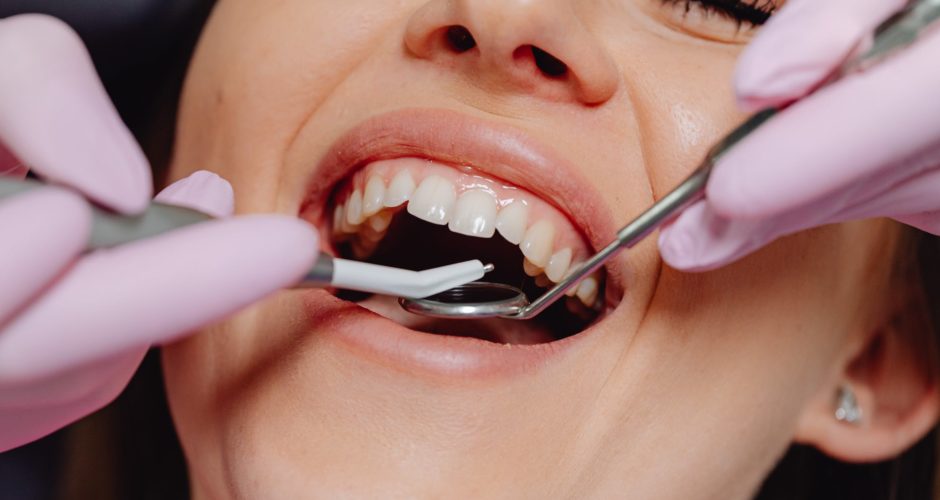Gingivectomy (gum tissue removal) is a common dental procedure used to treat gum disease and improve oral hygiene. For diabetic patients, considering any surgical intervention requires special attention due to their unique health challenges. If you are a diabetic considering Gingivectomy (Gum Tissue Removal) in Dubai, understanding the safety, risks, and precautions involved is crucial to making an informed decision and ensuring optimal treatment outcomes.
Understanding Gingivectomy and Its Purpose:
Gingivectomy is a dental procedure that involves removing excess or diseased gum tissue to reduce periodontal pockets and enhance gum health. It is typically recommended for patients with gum overgrowth, persistent inflammation, or pockets that trap bacteria and plaque. For diabetics, this procedure can help improve oral hygiene, which is essential since they are more prone to gum infections.
Diabetes and Oral Health: The Connection:
Diabetes affects the body’s ability to heal and fight infections, making diabetic patients more vulnerable to gum disease. Poorly controlled blood sugar levels can lead to increased inflammation, delayed healing, and a higher risk of complications after dental procedures. Maintaining good oral hygiene and managing diabetes effectively is essential for minimizing these risks.
Is Gingivectomy Safe for Diabetic Patients?
When diabetes is well-managed, Gingivectomy (Gum Tissue Removal) in Dubai can be performed safely with proper precautions. Dentists typically assess blood sugar control before proceeding and coordinate with your healthcare provider if needed. Patients with uncontrolled diabetes may face higher risks of infection and delayed healing, so stabilizing blood sugar is a critical step prior to surgery.
Pre-Procedure Precautions for Diabetic Patients:
-
Thorough medical and dental evaluation
-
Blood sugar level assessment and optimization
-
Coordination with the patient’s physician or endocrinologist
-
Planning the procedure at a time when blood glucose levels are stable
-
Informing the dental team about all medications being taken
These steps help minimize risks and improve the chances of a successful outcome.
What to Expect During the Gingivectomy Procedure:
For diabetic patients, the gingivectomy procedure itself is similar to that for non-diabetics, but with added attention to sterile techniques and patient comfort. The dentist will administer local anesthesia and carefully remove the targeted gum tissue. The process usually takes less than an hour and may involve laser or scalpel techniques depending on the clinic and patient needs.
Post-Procedure Care for Diabetics:
Effective post-operative care is vital to prevent complications such as infections or delayed healing in diabetic patients. Important care tips include:
-
Taking prescribed antibiotics or anti-inflammatory medications as directed
-
Maintaining excellent oral hygiene with gentle brushing and rinsing
-
Avoiding smoking and alcohol during the healing phase
-
Eating a balanced diet to support immune function
-
Monitoring blood sugar levels closely for any fluctuations
Following these recommendations can help ensure a smooth recovery.
Risks and Complications Diabetics Should Be Aware Of:
While gingivectomy is generally safe, diabetic patients may experience:
-
Slower healing compared to non-diabetics
-
Increased risk of infection at the surgical site
-
Greater inflammation and discomfort post-surgery
-
Potential for gum tissue recession if not monitored
Understanding these risks allows patients and dentists to prepare and manage expectations accordingly.
Benefits of Gingivectomy for Diabetics:
Despite the risks, gingivectomy offers several important benefits for diabetic patients, including:
-
Reduction of bacterial plaque that worsens gum disease
-
Improved access for daily oral hygiene and dental cleanings
-
Decreased gum inflammation and bleeding
-
Prevention of advanced periodontal disease that can affect overall health
These advantages highlight why gingivectomy remains a valuable option when performed safely.
Choosing the Right Clinic for Gingivectomy (Gum Tissue Removal) In Dubai:
Selecting a dental clinic experienced in treating diabetic patients is essential. Clinics offering Gingivectomy (Gum Tissue Removal) in Dubai with expertise in managing medically complex cases typically provide:
-
Comprehensive medical assessments before surgery
-
Use of advanced technologies like laser gingivectomy to reduce trauma
-
Personalized treatment plans tailored to diabetic needs
-
Close monitoring during recovery for any complications
This level of care helps ensure the best possible outcomes.
Alternative Treatments for Diabetics with Gum Disease:
For some diabetic patients, less invasive treatments might be recommended initially, such as:
-
Scaling and root planing (deep cleaning)
-
Improved oral hygiene routines
-
Use of antimicrobial mouth rinses
-
Medication adjustments to better control inflammation
These options can help manage gum disease before considering gingivectomy surgery.
Importance of Blood Sugar Control Before and After Gingivectomy:
Consistently maintaining blood glucose within the target range significantly reduces risks related to gingivectomy. Good control:
-
Enhances the body’s healing ability
-
Lowers the chance of infection
-
Minimizes inflammation in gum tissues
-
Improves overall dental and systemic health
Working closely with healthcare providers to stabilize diabetes is a key factor in successful gingivectomy outcomes.
Monitoring and Follow-Up Care:
After gingivectomy, diabetic patients require regular follow-ups to assess healing and prevent recurrence of gum problems. Follow-up visits typically include:
-
Checking gum tissue healing and contour
-
Professional cleanings to remove any new plaque or tartar
-
Reinforcing proper oral hygiene techniques
-
Adjusting treatment plans as needed based on patient progress
Consistent monitoring ensures any complications are promptly addressed.
Final Thoughts:
Gingivectomy (Gum Tissue Removal) in Dubai can be a safe and effective procedure for diabetic patients when carefully planned and managed. The key to success lies in optimizing blood sugar control, choosing an experienced dental provider, and following diligent post-operative care. While diabetic patients may face unique challenges such as slower healing and increased infection risk, the benefits of improved oral hygiene and gum health often outweigh these concerns. If you are diabetic and considering gingivectomy, consult with your dental and medical professionals to develop a comprehensive treatment plan tailored to your needs. With the right precautions, gingivectomy can significantly enhance your oral health and quality of life.







0 Comments